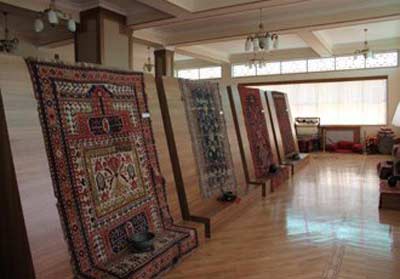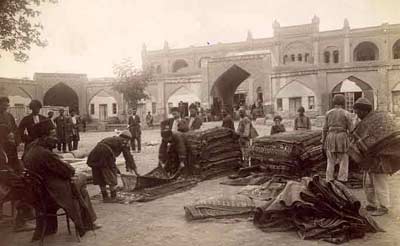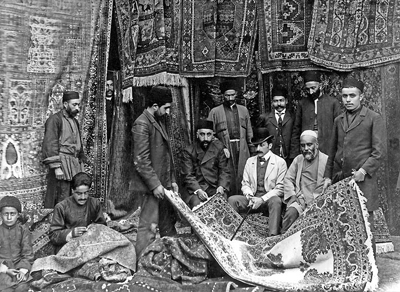Home page
» CARPET WEAWING
» About Carpet
About CarpetAzerbaijani carpets is one of the branch of the eastern carpet-making art .In November of 2010 it was included in the “Non-material Cultural Heritage” of the UNESCO. Unfortunately, often it is demonstrated in the world museums under the name of the Caucasian, Iranian, even Armenian carpets.  Carpet-making history in Azerbaijan Herodotus, Claudius Elian, Xenofontus and other ancient historians of the world had informed about development of carper making in Azerbaijan. During Sasanids carpet art has developed even greater, and beautiful carpets were woven from silk, golden-silver threads. Albanian historian Musa Kalantarsky (VII century) had given information about carpets woven from silk cloths, and motley carpets. Carpet making from golden-silver threads and adorned with precious stones had taken a traditional character in XVI-XVII centuries. Such pileless carpets were mostly made in Tabriz, Shamakhy and Barda towns. As it cost expensive such carpets were made for feudal and called “zarbaf’. Till early of XX century Azerbaijani carpet had an important position in the world market.  Development of carpet art in Azerbaijan comes to middle of XX century. One branch of development of carpet art was connected with Azerkhalcha Production Union. But its other branch was developed by professional painters. Carpets woven on base of new ornaments and patterns created by them, has assumed vital importance in enriching of the classic compositions. Azerbaijani carpets are divided in piled and pileless kinds due to technical features. Pileless carpets come to very early time of the weaving art. Pileless carpets are divided into 8 kinds for style of weaving, composition, ornament richness and colors: palas, jejim, ladi, kilim, shadda, varni, zili, sumakh.  During XIII - XIV centuries many carpets and carpet items were exported to foreign countries from Azerbaijan. These carpets drawing the attention with its tender ornaments, fine and graceful patterns were reflected in famous works, miniatures of Europe. In work of Dutch painters of XV century Hans Memlinq “Mariam with baby” Shirvan carpet, in work of Van Eik Saint Mariam” “Zeyva carpet, in work of German painter Hans Holbeyn (XV century) “Ambassadors’ “Gazakh” carpet were reflected. In the second half of XVIII century carpet making had been considerably expanded during khanates time, and each khanate had own carpet-making workshop, which had created a ground of formation of different schools. Best samples of carpets and carpet items brought from Guba, Shamakhy, Ganja, Shaki, Gazakh, Javad provinces and other places had been awarded in 1872 in Moscow at Moscow-Polytechnic” exhibition and in 19882 in “All Russian industry and art exhibition” with golden, silver medals. Major part of the exhibits demonstrated in international exhibitions organized in Vienna (Austria) in 1872, in Turin (Italy) in 1911, and in London and Berlin in 1913 has consisted of carpet items brought from Azerbaijan. Azerbaijani carpet making schools Azerbaijani carpets are divided in 7 schools conditionally because of its geographical position, patterns and composition, color solution and technical features like an art: 1. Guba carpet-making school 2. Absheron carpet-making school 3. Shirvan carpet-making school 4. Ganja carpet-making school 5. Gazakh carpet-making school 6. Garabagh carpet-making school 7. Tabriz carpet-making school 8. Nakhchivan carpet-making school
|
